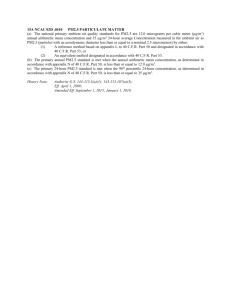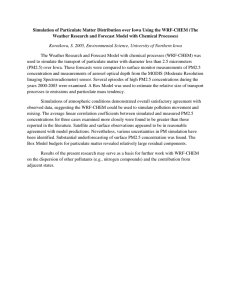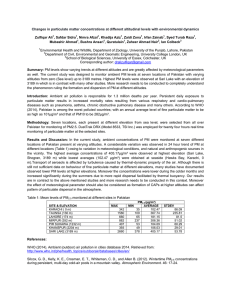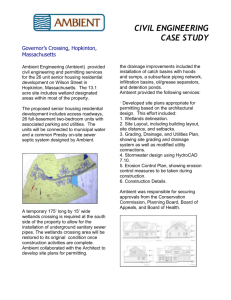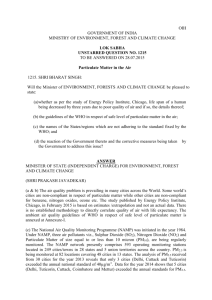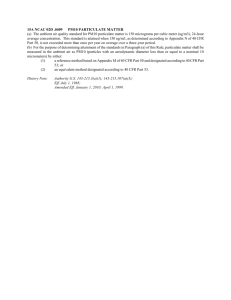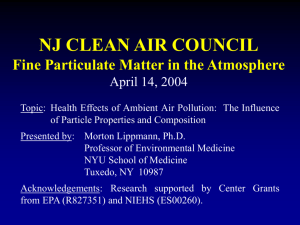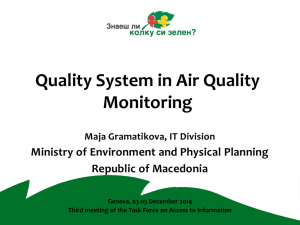Quantification of Organic Trace Compounds in Denver`s Ambient Air
advertisement
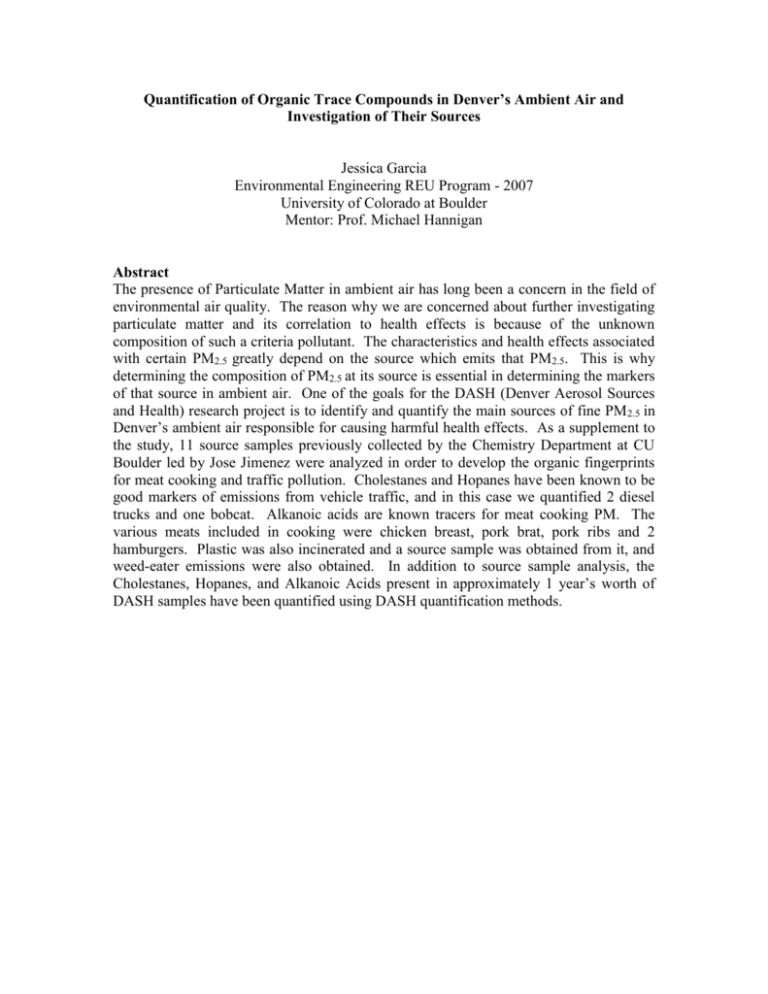
Quantification of Organic Trace Compounds in Denver’s Ambient Air and Investigation of Their Sources Jessica Garcia Environmental Engineering REU Program - 2007 University of Colorado at Boulder Mentor: Prof. Michael Hannigan Abstract The presence of Particulate Matter in ambient air has long been a concern in the field of environmental air quality. The reason why we are concerned about further investigating particulate matter and its correlation to health effects is because of the unknown composition of such a criteria pollutant. The characteristics and health effects associated with certain PM2.5 greatly depend on the source which emits that PM2.5. This is why determining the composition of PM2.5 at its source is essential in determining the markers of that source in ambient air. One of the goals for the DASH (Denver Aerosol Sources and Health) research project is to identify and quantify the main sources of fine PM 2.5 in Denver’s ambient air responsible for causing harmful health effects. As a supplement to the study, 11 source samples previously collected by the Chemistry Department at CU Boulder led by Jose Jimenez were analyzed in order to develop the organic fingerprints for meat cooking and traffic pollution. Cholestanes and Hopanes have been known to be good markers of emissions from vehicle traffic, and in this case we quantified 2 diesel trucks and one bobcat. Alkanoic acids are known tracers for meat cooking PM. The various meats included in cooking were chicken breast, pork brat, pork ribs and 2 hamburgers. Plastic was also incinerated and a source sample was obtained from it, and weed-eater emissions were also obtained. In addition to source sample analysis, the Cholestanes, Hopanes, and Alkanoic Acids present in approximately 1 year’s worth of DASH samples have been quantified using DASH quantification methods.
